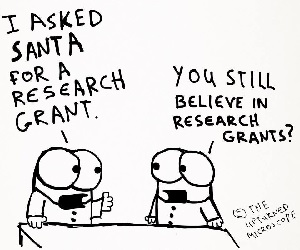As a scientist, you need funding. These days, most funding has to come from external sources, such as national funding agencies, the European Union or funding organizations aimed at specific topics, like the Dutch Kidney Foundation (Nierstichting Nederland).
To get funding, you will have to write a proposal outlining your plans, preferably supported by some pilot evidence. However, a good plan and some good preliminary results are often not enough. Most funding programs are heavily oversubscribed, so you have to stand out in the crowd – not only by good science but also by a good presentation.

Your proposal should be convincing and persuasive. Convincing means that you present your ideas and preliminary data in a clear manner. You can’t just list all your ideas and accomplishments, you need to present them in a story. That may sound odd to a scientist, but we’re not talking fiction here, nor a sales pitch, but a presentation that follows a clear storyline that allows the reader to follow your reasoning and see where you want to go.
That’s where editorial support comes in. As a science writer, I have ample experience in getting to the heart of your project and making sure the ‘story’ of your proposal is clear. Editing is not (just) about dotting i’s and crossing t’s, it is also about presenting your message as clearly as possible.
For a specialist in any field, the danger is always to skip steps in an explanation. As a non-specialist, I’m bound to notice those. In my short lecture ‘The Art of Scientific Storytelling’ I can take you through this process. And I can also go through your funding proposal and point out ways to make it more clear and more persuasive.
Feel free to contact me about editorial support.
If you want to read up on this topic, I recommend Funding Your Career in Science by Ritsert C. Jansen